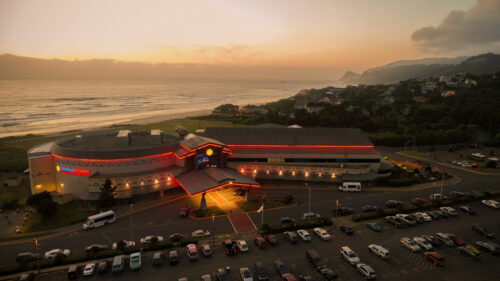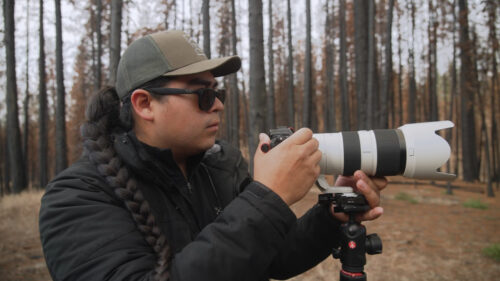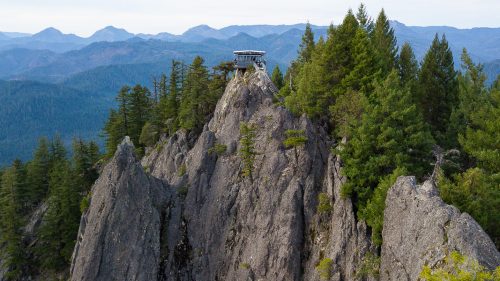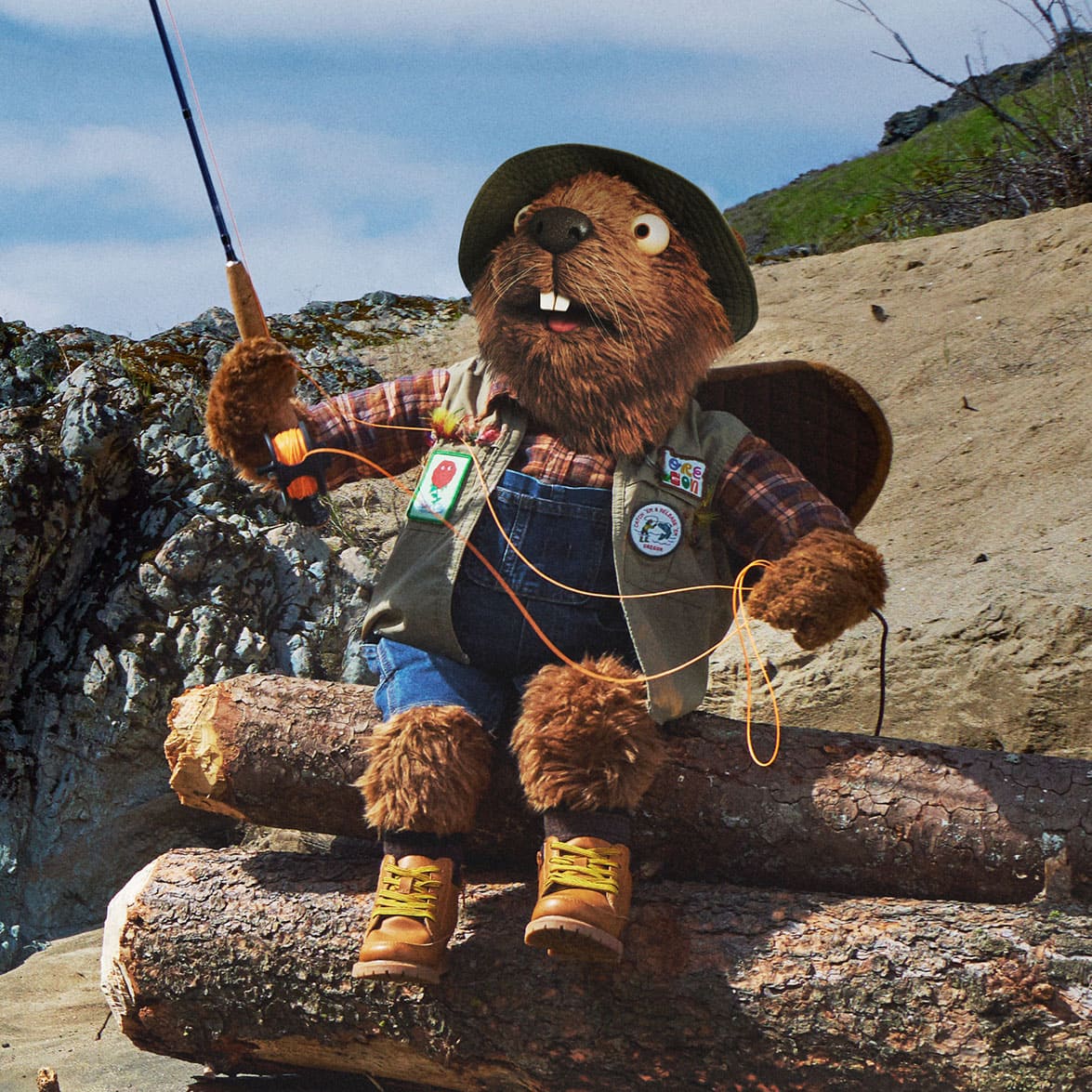You may be familiar with Southern Oregon’s Klamath Basin, a mix of swaying grasslands, serene lakes and dense forests. You may not have known the rich history and culture of the Klamath Tribes embedded in the snowcapped mountains. One of nine federally recognized Indigenous Nations in Oregon, the Klamath Tribes consist of three groups who have inhabited the area since time immemorial: the Klamath, Yahooskin and Modoc.
Before colonization of Oregon, Tribes lived throughout the Klamath Basin, their lands extending from Fort Rock beyond Oregon’s southern border. The Klamath Tribes have sustainably maintained the landscape’s forests, valleys and waterways so that resources were always bountiful and the ecosystem healthy. However, after decades of overexploitation of waterways at the hands of the federal government and corporations, the region is currently pushed beyond its capacity to naturally support life.
Today the Klamath Tribes continue the battle for their water rights and land rights, and the future of the Tribes and the Klamath Basin is at stake. In February 2021, an Oregon court affirmed the Klamath Tribes’ treaty rights to fish, hunt, trap and gather in the Klamath Basin. However, opponents of Tribal rights are still attempting to limit the Tribes’ access to water by alleging that they don’t need all of the water in the treaty. Due to climate change and drought, it’s one of many critical and complex water wars in the nation today.
You can get a good overview of the issue by watching the 2021 PBS documentary, “Killing the Klamath,” which details the importance of water management to the area. It also explores ways the public can support the Klamath Tribes in the fight to restore the sacred c’waam (Lost River suckers) and koptu (shortnose suckers) fish populations, as well as their full treaty rights to the Upper Klamath Lake.
Treaties Made and Broken
Today’s conflicts date back most recently to when the Oregon Trail was established in the early 1830s, and the U.S. government encouraged white Americans to venture west and strengthen settlements in Oregon. Even before treaties were signed between the U.S. government and sovereign Indigenous Nations, the Oregon Donation Land Claim Act was passed in 1850, promising 320-acre parcels to thousands of white Americans who settled in Oregon.
When the Klamath Tribes formally signed a treaty to secure fishing, hunting, gathering and water rights on the new reservation, it also required the Klamath Tribes to cede almost 22 million acres of their land — and retain just a little over 1 million acres for the reservation.
Then in 1954, the federal government broke the treaty and terminated the Klamath Tribes’ Tribal recognition under the Klamath Termination Act, further threatening the Klamath Tribes’ access to land and livelihood. It took 32 years of perseverance and organizing for the Klamath Tribes to regain federal Tribal recognition in 1986.
Amidst all of the strife, the Klamath Basin is one of the most beautiful places in Oregon to visit if you’re looking for nature, wildlife and solitude. Whether you’re hiking, paddling, camping or trying your luck at a slot machine, here’s how to enrich your next trip to the region and support the Tribes along the way.
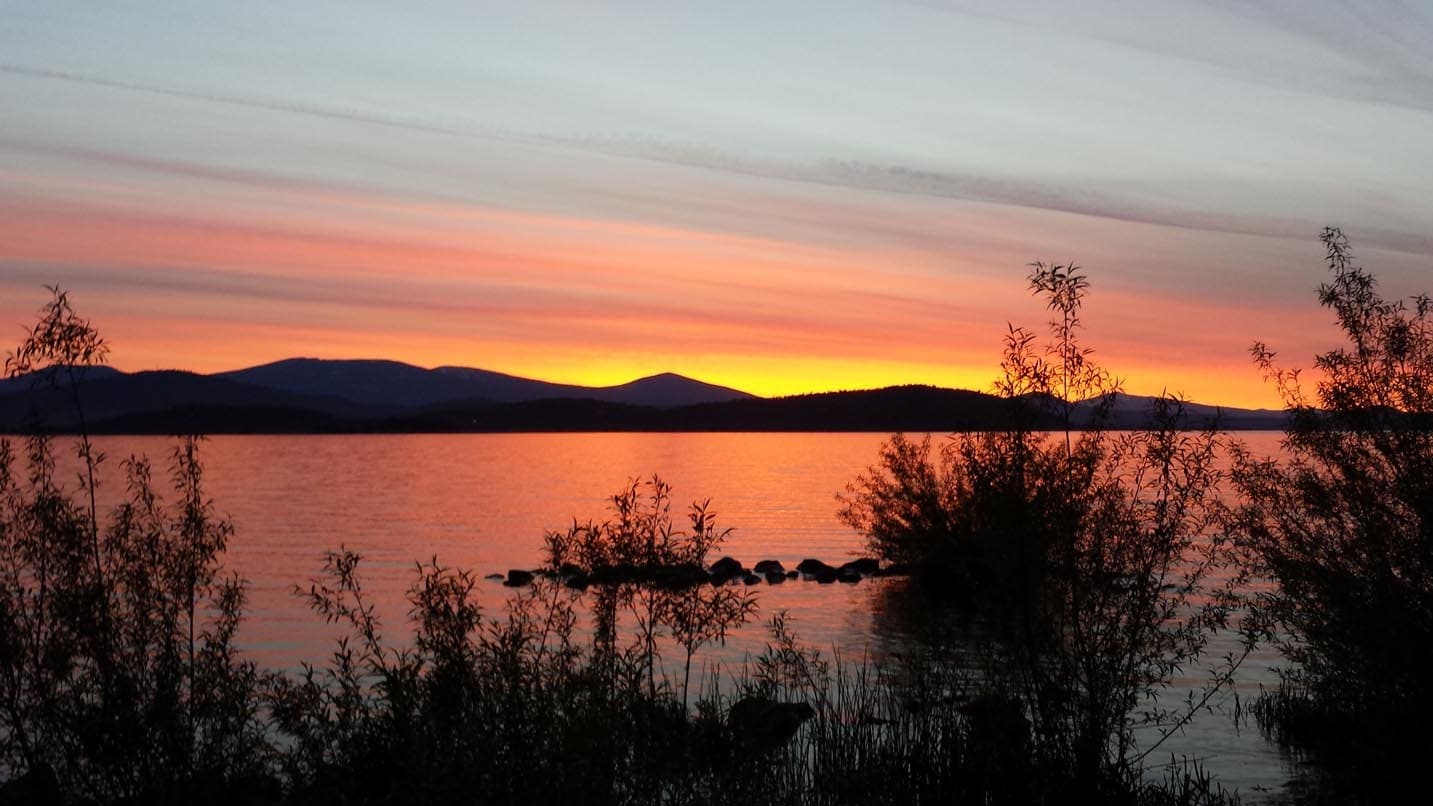
Klamath Lake
Less than 30 miles south of Crater Lake National Park, Klamath Lake (also known as Upper Klamath Lake) is the largest body of freshwater in Oregon. Visitors can spend the day kayaking or picnicking on the water and bird-watching on this Pacific Flyway year-round, especially during the winter migration season. (Look for the Winter Wings Festival in February.)
Klamath Lake has long been a source of both food and ceremonial practices for the Klamath Tribes. Along with elk, deer, antelope and native plants, the fish in Klamath Lake — specifically c’waam and koptu — have remained a crucial element to both the diet and heritage of the Klamath Tribes.
According to legends, the Creator gifted c’waam to the Klamath Tribes and provided a stable (and delicious) protein source for thousands of years. When white settlers were unable to survive and find food on their own, the Klamath Tribes brought them prepared c’waam.
However, in 1905 the Bureau of Reclamation took possession of all unclaimed waters and initiated a massive infrastructure project — ignoring Tribal treaties — to build thousands of miles of canals, drains and a series of dams on Klamath Lake to support farming. In doing so, agricultural runoff has polluted the water, water levels fell, algae proliferated and water temperatures rose, all of which has endangered c’waam and koptu populations.
When you visit the lake, you are seeing both the past and the possible scenarios for the future. In the words of the Klamath Tribes, “If the c’waam go away, the people go away.”
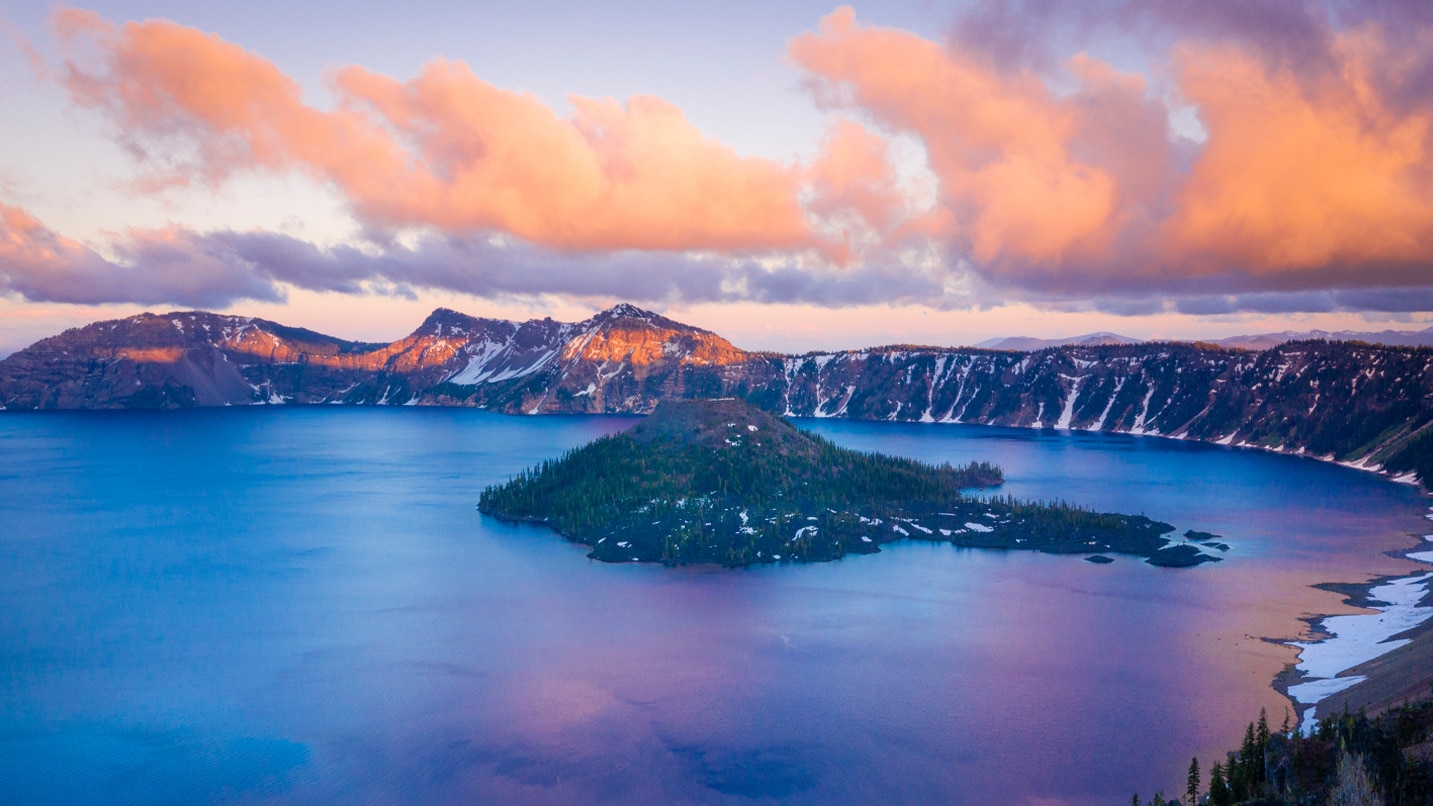
Crater Lake
The deepest lake in the U.S. and one of the deepest in the world, Crater Lake is rooted in Indigenous culture. There are many creation stories of how the lake was formed after the eruption of the ancient volcano Mt. Mazama, or Moyaina as it was known at the time. To this day, Giiwas (Crater Lake) has held spiritual significance to many Tribes in the area. At Oregon’s only national park, visitors are encouraged to continue the millenia-old tradition of treating the lake and surrounding natural beauty with respect and gratitude.
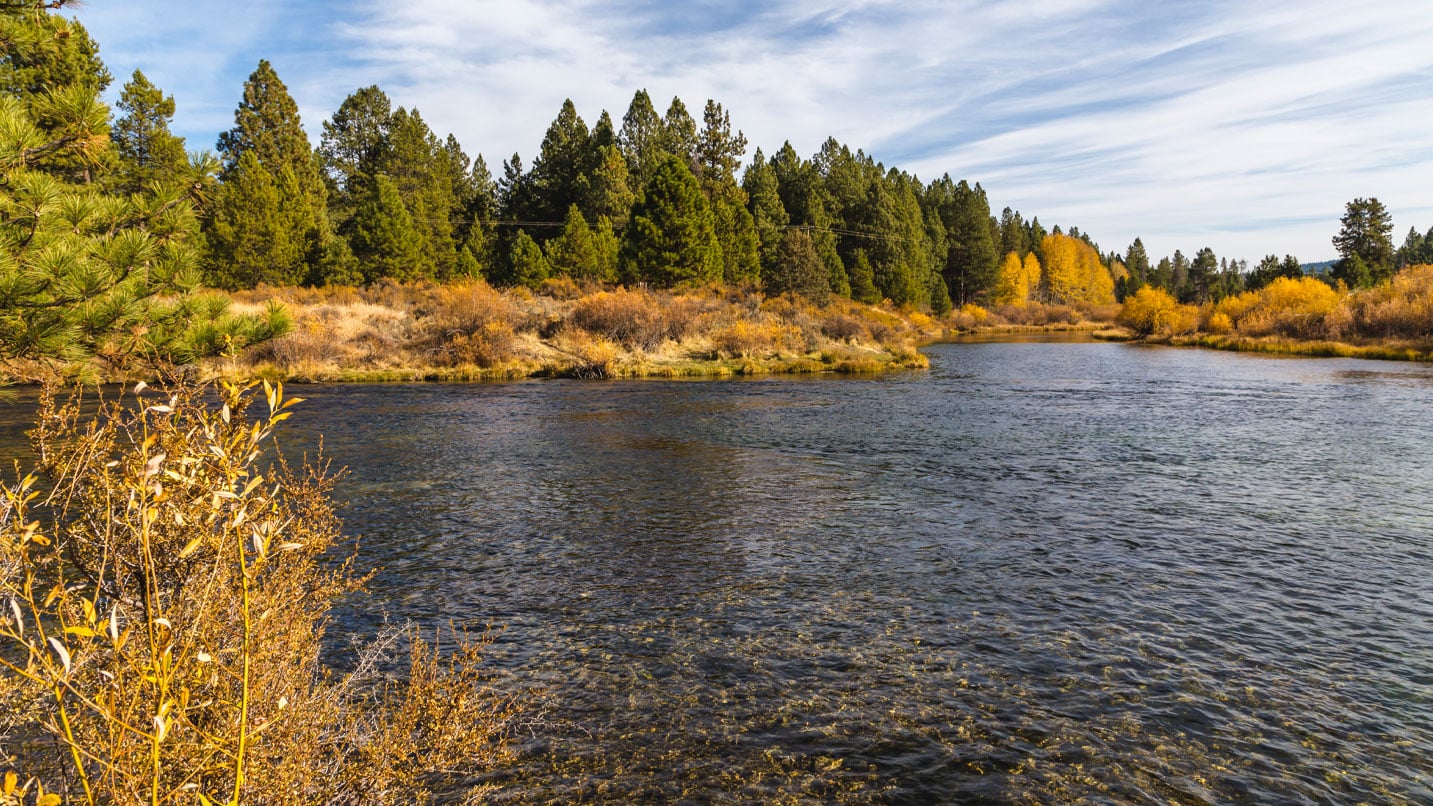
Collier State Park
Collier Memorial State Park in Chiloquin is another outdoor haven, on the banks of the Williamson River and Spring Creek. It’s home to a primitive horse camp, trails, two day-use areas, a campground, a relocated pioneer village and one of the state’s largest outdoor museums of historic logging equipment, housing items dating back to the 1880s. When visiting this area, please be respectful to tribes by leaving the area cleaner than you found it and never removing artifacts from the site. Look for interpretive signs on-site about the tribal significance of the area.
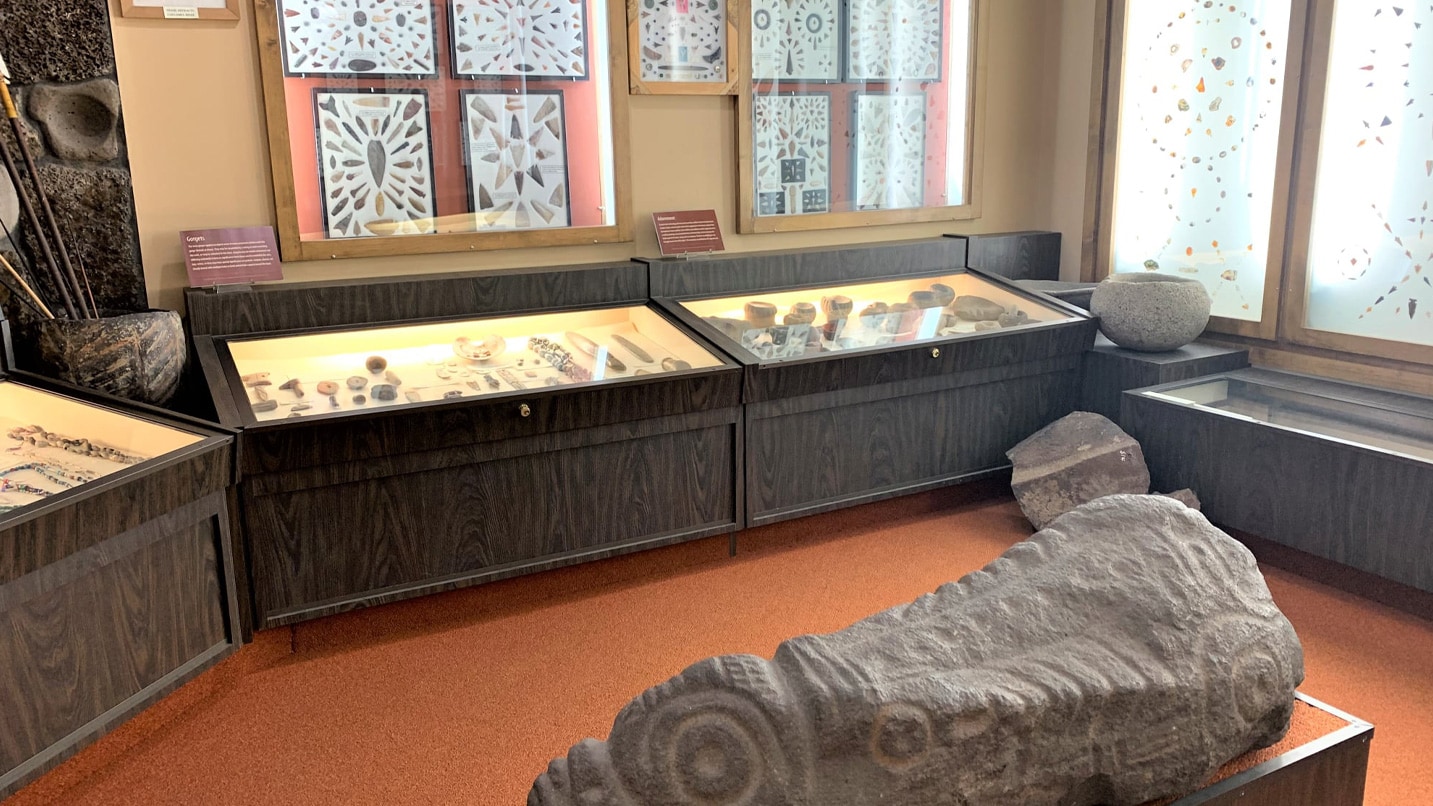
Museums
If you’re a fan of exploring museums on your travels, Klamath Falls is home to the Favell Museum and the Klamath County Museum, both rich sites of regional history and culture. The Favell Museum was founded and dedicated to preserving and sharing Indigenous history of the Americas, with an emphasis on the Klamath Tribes and nearby Shasta Tribe. Visitors can see thousands of Native American artifacts like tools and intricate beadwork, and get a glimpse of how Indigenous communities lived precolonization.
The Klamath County Museum provides insight into the Modoc War, during which 55 Modoc warriors resisted the violent encroachment of white settlers in the area from 1872 to 1873. You can download a free Modoc War audio tour to listen to as you travel throughout the area. The tour is narrated by Cheewa James, great-granddaughter of Modoc warrior Shkeitko, also known as Shacknasty Jim. The museum also hosts fascinating exhibits about the geology, local fauna and wildlife of the Klamath Basin.
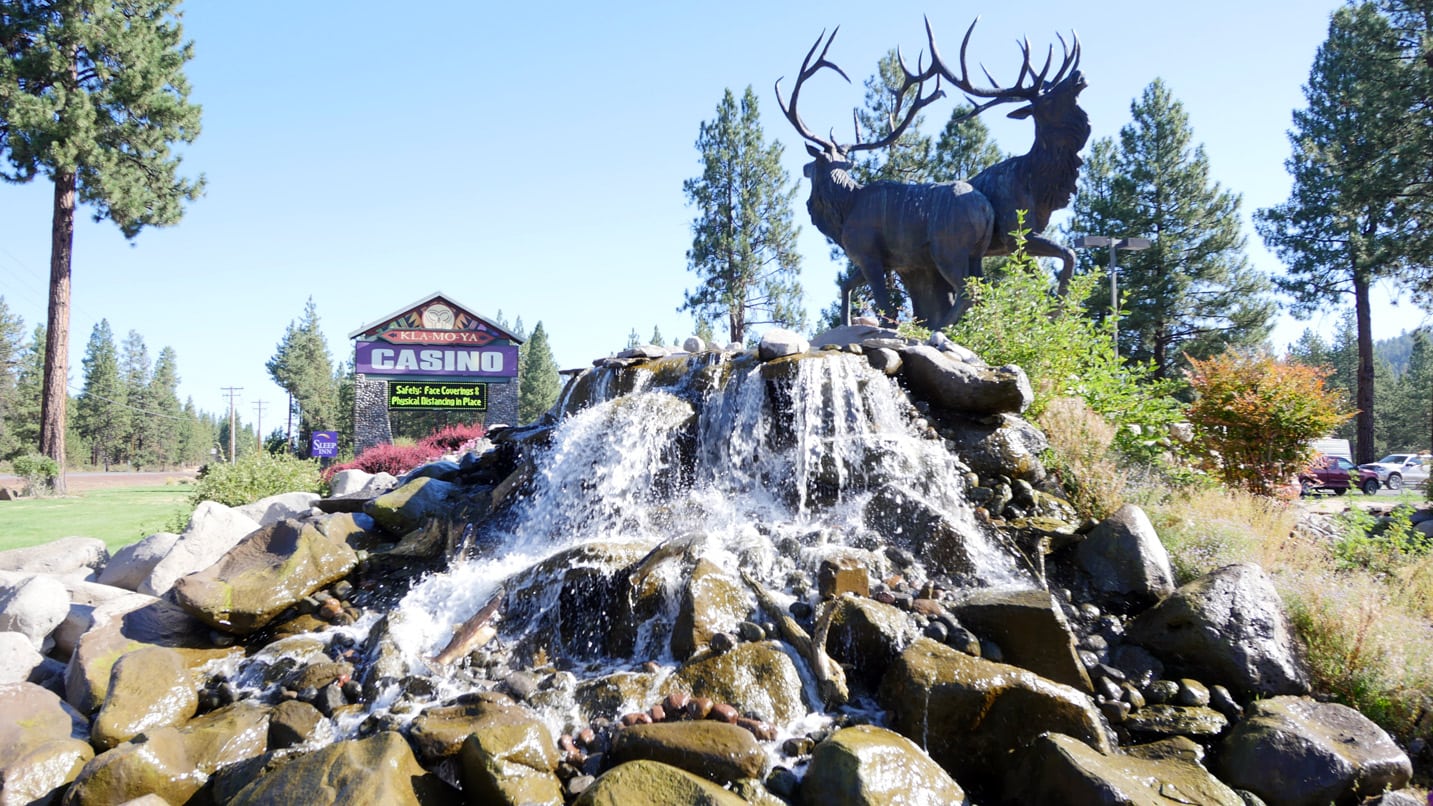
KLA-MO-YA Casino
As the second-most-visited attraction in the region (next to Crater Lake), the KLA-MO-YA Casino (which stands for Klamath, Modoc, Yahooskin) in Chiloquin is an exciting hub of Tribal culture. It’s home to more than 340 slot machines, dining at Peak to Peak Rotisserie & Lounge, comfortable lodging at the KLA-MO-YA Sleep Inn & Suites next door to the casino, and an RV park. The casino supports the community through various efforts including relief for neighbors who’ve been displaced by regional wildfires. Consider donating to the effort to Rebuild Chiloquin, which was devastated by the Two Four Two Fire of 2020.
Annual Powwows and Events
An excellent way to experience Tribal culture is at an annual event or powwow. The Klamath Tribes’ Annual Return of C’waam Ceremony is held in March along the banks of the Sprague River in Chiloquin. This ritual continues the tradition of welcoming c’waam back into the rivers after a long winter, and is celebrated with dancing, drumming and releasing a pair of c’waam into the river. Although you’ll have to leave your pets and photography equipment at home, it’s a chance to join community members in giving prayers and offerings for the continued existence of the sacred c’waam fish.
Typically in May, the Tribes host the Chief Schonchin Memorial Days Powwow at the Klamath County Fairgrounds (check the calendar to confirm the event status). While Chief Schonchin did not fight in the Modoc War, his band had already moved north to the Klamath Reservation and remained there during and after the Modoc War of 1872-73. His brother, Schonchin John, did fight along-side Captain Jack, Scarface Charley, Boston Charley and Black Jim (just to name a few), and his brother Schonchin John was one of the four Modoc Warriors wrongfully murdered by the government after the war, at Ft. Klamath.
Every year, the fourth weekend in August is the Restoration Celebration Powwow, which is open to the public and offers the opportunity to learn of the Klamath Tribes’ culture while enjoying the festivities.
A Brighter Tomorrow
As you travel throughout the region and continue to deepen your knowledge of Oregon’s Indigenous history, you can support the Klamath Tribes’ efforts by donating, supporting their businesses and attractions, respecting and appreciating the culture, and sharing your awareness with others around you. In addition, nonprofit organizations such as Seeding Justice, a grassroots organization focused on dismantling systemic injustice in Oregon, has created the Ambo Fund (named after the Klamath word for water), a donation-based community fund that directly contributes to effort to restore the endangered-fish populations in the Upper Klamath Lake area.
